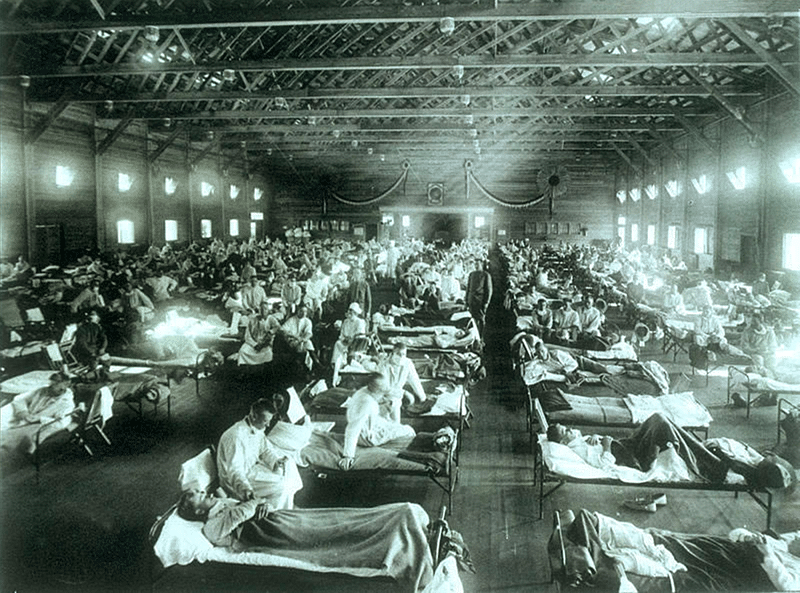The tragic nature of the coronavirus pandemic continues to shock us all on a daily basis. Global deaths have passed twenty thousand with over four hundred thousand confirmed cases. However, global health issues are nothing new as these five deadly pandemics illustrate. At least the majority of countries are facing this threat with better healthcare systems than they had in the past. Have a look at these pandemics:
1. 1846-1860 Cholera Pandemic
Cholera is a condition which still causes a huge number of deaths across the developing world. The World Health Organisation estimates that there are 1.3 to 4 million cases a year with there having been major outbreaks in war torn Yemen in recent years. However, this nineteenth century pandemic was the most deadly outbreak of any illness during the entirety of that period. It originated in India but spread across the world.
Russia was one of the worst affected nations with over a million deaths. The UK also suffered a devastating twenty-three thousand fatalities. However, some of the epidemiology (the branch of medicine which relates to the control of disease spread) which is helping us today originated in London during this outbreak. Dr John Snow managed to track the location of a severe outbreak near Broad Street, London in 1854 to a contaminated water pump. This study was revolutionary and spurred Snow to found the Epidemiological Society of London.

Credit – Wikimedia
2. HIV/AIDS
HIV and AIDS continues to be an enormous public health challenge globally. At the end of 2018 there were approximately 37.9 million people living with the illness. Whilst the conditions are no longer the death sentence they once were there is a huge amount of misinformation and stigma attached to the virus.
HIV can’t only be contracted by drug users or gay men and can’t be spread through social contact such as hand-shakes or hugging. Whilst the majority of those with the condition can lead normal lives, with medications severely increasing life expectancy and some trials having even cured the condition in two patients there are still problems. Over two thirds of those with HIV/AIDS live in Africa with some countries that have poor health systems letting sufferers down, resulting in further spread.
3. The Black Death
When we hear the phrase ‘Black Death’ it draws up so many images of horror. Indeed, it doesn’t even seem real. The sight of someone jokingly dressed as a plague doctor in the background of a BBC report last week shows how we have almost forgotten the devastating impacts of the 14th century outbreak in Europe. However, the Black Death was the most devastating pandemic in human history wiping out 30-60% of Europe’s population.
The disease arrived from Asia. Experts believe either from ships or along ancient trading routes and was then spread by infected fleas on rats and other rodents. There are still around 1000-2000 cases a year, mostly in Africa, but hopefully this vile illness will never be seen in mass numbers again.
4. Antonine Plague
The Roman Empire is viewed as a powerhouse, a military superpower which swept across Europe with its’ armoured might. However, between 165 and 180AD the Empire was ravaged by an illness which academics believe was either smallpox or measles. There is a common consensus that the disease first appeared during the siege of the ancient city of Seleucia, in modern-day Iraq. It then spread back to Europe.
Estimates are sketchy but it is believed that over five million people died, decimating the Roman army. It is suspected that the Roman Emperor Lucius Verus was among the dead.
5. Spanish Flu
This epidemic lasted for three years between 1918 and 1920. It was named the ‘Spanish Flu’ as the press were censored on reporting the scale of the pandemic in 1918 in the Allied Powers in order to maintain morale during World War One. Thus, they reported on Spain who were neutral during the war-making the impact on that country appears far worse, resulting in the coining of the name. However, the influenza virus had spread throughout Europe.
Usually, the spread of this disease would result in the deaths of the very young and very old. However, this epidemic killed people of all age groups. It infected nearly a quarter of the global population and killed between 17 and 100 million people. Modern analysis has suggested that overcrowded hospitals, poor hygiene and malnourishment resulted in a huge number of deaths.
Tragic health crises have torn apart families and friends for aeons. We are in one now. The majority of us probably know someone suffering from coronavirus and very soon we may know someone who has died. However, as we gaze back through history it is imperative to remember that we will struggle through. It is so important we all follow the government advice and stay inside to try and lessen the number of painful blows in the weeks ahead.
To grasp the seriousness of this situation check out these warnings from Italian mayors.
Featured Image Credit – Wikimedia














